Key takeaways:
- Adapting teaching methods by incorporating diverse musical genres and cultural elements can greatly enhance student engagement and expression.
- Using collaborative projects and technology fosters peer interaction and accommodates different learning styles in music education.
- Flexibility in lesson planning, such as employing visual aids and allowing students to select music, empowers learners and promotes inclusivity.
- Success stories highlight the importance of recognizing each student’s unique strengths, showcasing the transformative power of music education in diverse classrooms.
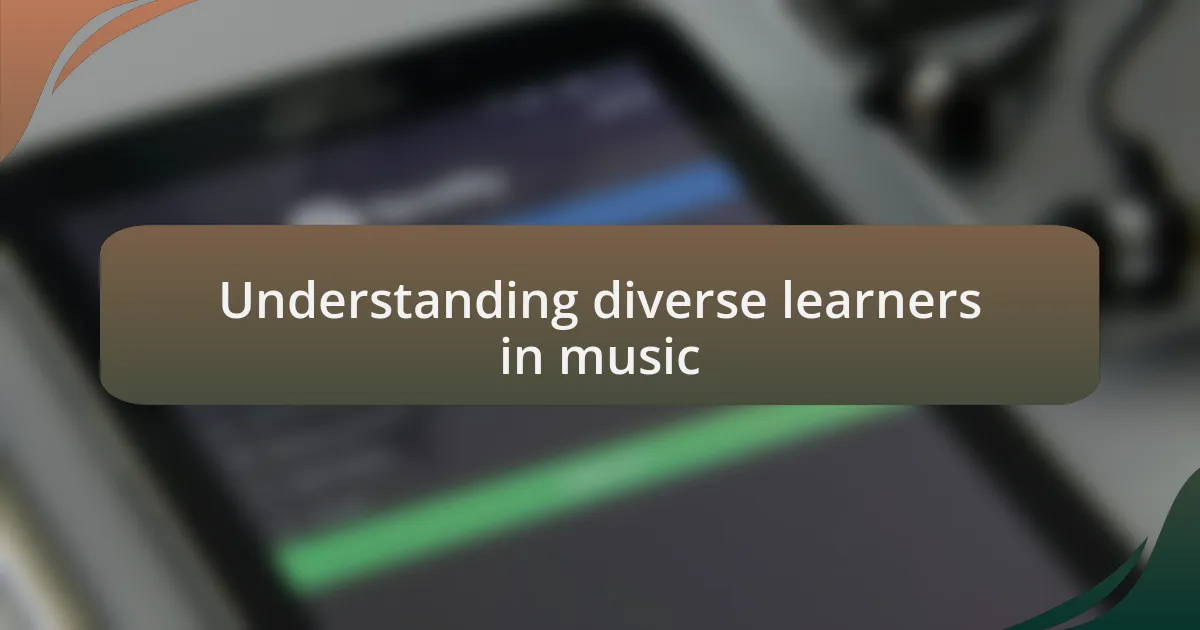
Understanding diverse learners in music
Understanding diverse learners in music requires recognizing that each student comes with unique backgrounds and experiences. I remember teaching a young girl who was a refugee; her connection to music was deeply rooted in her cultural heritage. How could I not be moved by her ability to convey so much emotion through a simple melody?
Moreover, it’s fascinating to see how different learners bring their own strengths into the music classroom. One of my students, who struggled with speech, found an extraordinary voice in percussion. Isn’t it remarkable how rhythm helped him express himself in ways words couldn’t?
Engaging with diverse learners means adapting our approach to foster inclusivity. I’ve seen firsthand how small changes in my teaching methods, like incorporating various musical genres, sparked enthusiasm in students from different backgrounds. Have you ever considered how this simple adjustment can make a world of difference in a child’s musical journey?
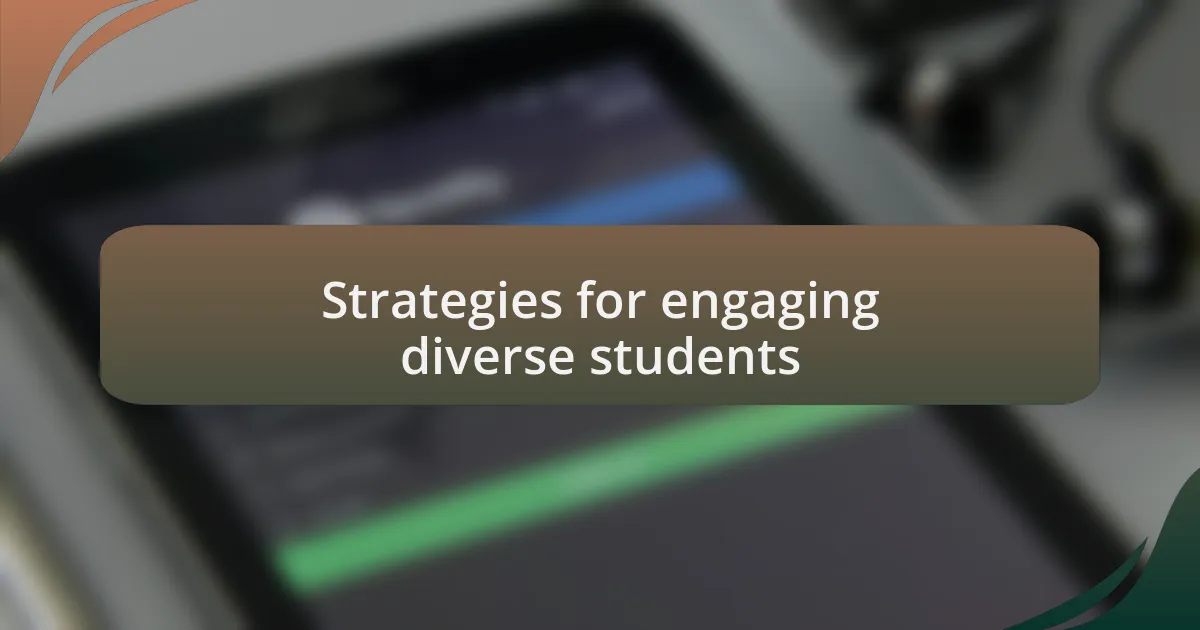
Strategies for engaging diverse students
One effective strategy I found is to create a culturally responsive curriculum that reflects students’ backgrounds. For instance, I once integrated traditional songs from a student’s native country into our lessons. The joy on her face when she heard her culture represented in our classroom was unforgettable, showcasing how music can bridge gaps between diverse experiences.
Another approach is to use collaborative learning techniques that promote peer-to-peer interaction. I remember organizing group projects where students selected a piece to perform together, mixing different musical styles and instruments. This not only fostered teamwork but also allowed them to learn from each other’s unique perspectives, enriching everyone’s musical experience.
I also encourage incorporating technology into our lessons, which can greatly engage diverse learners. By using apps that offer visual and auditory feedback, students can explore music in a way that resonates with their learning preferences. Have you ever witnessed a student light up when they successfully produce a sound through an app? It’s a testament to how embracing different tools can enhance their connection to music.
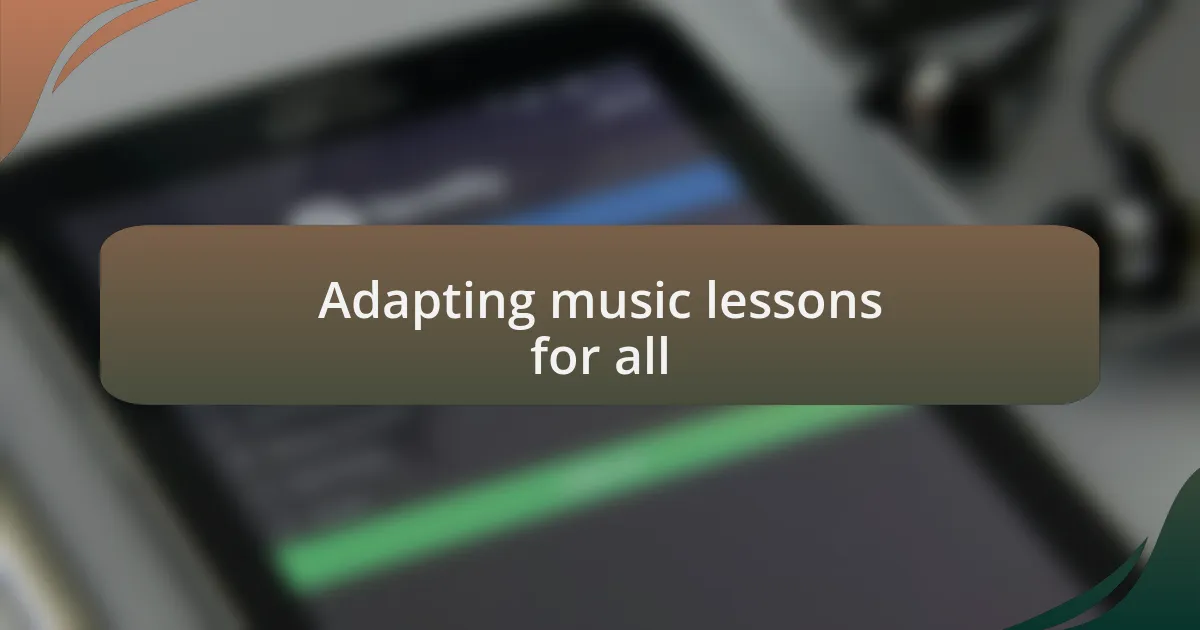
Adapting music lessons for all
Adapting music lessons for diverse learners often means being flexible in my approach. I vividly recall a lesson where I introduced a rhythm exercise using everyday objects like pencils and books. The excitement on my students’ faces was priceless as they created their own beats, showcasing their creativity while developing a fundamental understanding of rhythm. Isn’t it amazing how simple items can transform a lesson and make it accessible to all?
I’ve also found that visual aids play a crucial role in reaching every learner. In one class, I utilized colored notation systems to help students grasp musical concepts more readily. The moment one student, who previously struggled with traditional notation, confidently played along was a reminder of the power of adapting my teaching methods. How often do we overlook the potential of visual tools in music education?
Another valuable strategy is to offer choices in music selection. I remember allowing students to choose from a variety of genres for a class presentation. This not only empowered them but also encouraged discussions about cultural significance and personal connections to the music. It truly reinforced my belief that when learners have a say in their education, they are more engaged and motivated. Have you ever noticed how enthusiastic students become when they can express themselves through their chosen music?
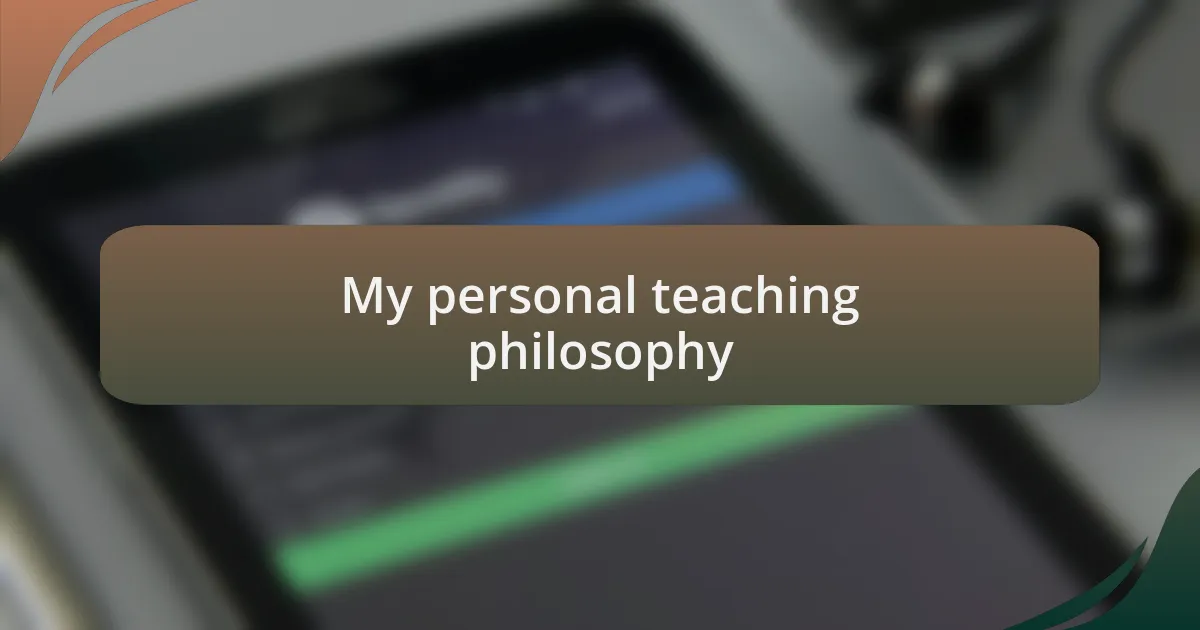
My personal teaching philosophy
My teaching philosophy revolves around creating an inclusive environment where every student feels valued and inspired. I once had a shy student who rarely participated in class discussions. After discovering her passion for songwriting, I encouraged her to share her work during lessons. Watching her transform from timid to confident was a powerful reminder that individuality can be a source of strength in learning.
I believe in fostering a sense of community within my classroom, where collaboration is key. One memorable experience involved organizing group projects that showcased different musical traditions. The way students from diverse backgrounds shared their stories and perspectives not only enriched the lesson but also deepened their connections with one another. Have you ever witnessed how shared experiences can unite a classroom?
Ultimately, I strive to instill a love for music that goes beyond just notes and rhythms. I remember a student who initially viewed music purely as a requirement. After introducing him to composition techniques, he found his own voice and created a piece that resonated with his life. It’s moments like these that affirm my belief that music education should empower students to express their emotions and creativity. How often do we underestimate the transformative power of music in a young person’s life?
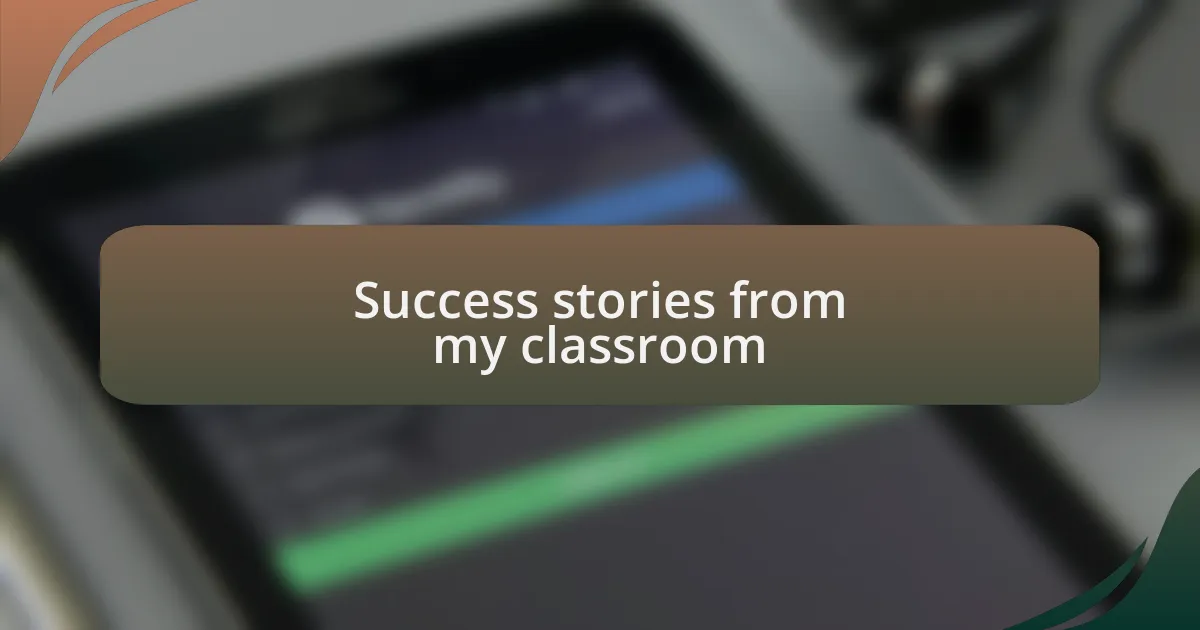
Success stories from my classroom
One of my proudest moments in the classroom came when a student with hearing loss started showing an incredible interest in rhythm and beat. We adapted our lessons to focus on vibrations and visual cues, and she quickly became our go-to drummer in class performances. Watching her light up when she played alongside her peers was a true testament to the idea that everyone has unique strengths to share in our musical journey.
Another success story involves a student who faced significant challenges with traditional music notation. Instead of focusing solely on reading sheet music, I introduced him to using technology to create music through software. The day he performed his first original piece using those tools, the joy on his face was indescribable. It made me reflect—how often do we overlook the diverse pathways to creativity in music education?
I also facilitated a collaborative project that brought together students from different cultural backgrounds to explore their musical heritage. Each child contributed a melody or rhythm from their culture, culminating in a beautiful multicultural ensemble. Seeing them celebrate each other’s traditions reminded me that music is a powerful bridge, uniting us in ways that transcend our differences. It raises the question: how can we, as educators, continue to nurture this vital connection?